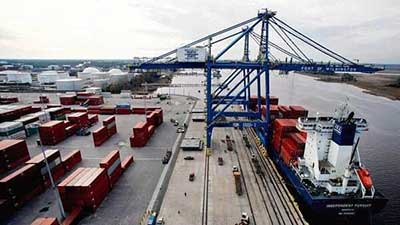Relevance: GS-3: Indian Economy and issues relating to planning, mobilization, of resources, growth, development and employment.
Key Phrases: Debt default, textile exports, invasion, Financial troubles, international market, materialization, payment mechanisms, foreign currency, free trade agreements.
Why in News?
- Sri Lanka’s $51 billion debt default and its ongoing economic crisis may present an opportunity for Indian exporters of tea and textiles. Yet, it won’t be easy for India to fill in the global supply gaps.
Tea Production in India
- After water, it is the most widely consumed drink in the world.
- Tea plants are native to East Asia and probably originated in the borderlands of southwestern China and northern Burma.
- Tea requires well drained soil with high amount of organic matter and pH 4.5 to 5.5.
- The performance of tea is excellent at elevations ranging from 1000 - 2500 m.
- Tea plants thrive in cooler climates with high amounts of rainfall—at least 40 inches per year.
- The nursery soil should be well drained and deep loam in nature with pH of 4.5 to 4.8.
- India produces around 110 million kg of orthodox tea and of that 90 per cent is exported.
- India is the second largest producer of tea in the world after China.
What is Causing the Shift in Demand?
- Tea and textile exports have long been Sri Lanka’s strength.
- Textiles and apparel make up more than 50% of its overall exports, while tea accounts for 17%.
- Financial troubles and ensuing power cuts in Sri Lanka, which has sought international aid, have made it challenging for Colombo to meet its export orders.
- The country’s exports began faltering during covid-19 pandemic and have only worsened after it ran out of foreign exchange to buy fuel.
- The steep rise in crude oil prices following Russia’s invasion of Ukraine have added to its troubles.
- Buyers from across the globe are now looking for alternative suppliers.

India Filling the Supply Gap for Tea
- According to tea exporters, India is well-positioned to capture markets in countries that import orthodox tea—loose-leaf tea that is produced using traditional methods.
- Besides strengthening its footprint in Iran, the Sri Lankan economic crisis could open up newer markets such as the US, Turkey, Iraq, China, and Canada.
- India is now working on a strategy to tap into the supply gaps.
- It includes exploring alternative payment mechanisms for trade with sanctions-hit Russia and Iran markets, besides marketing and brand promotion activities in Europe and North American countries.
Is There a Surge in New Orders for India?
- According to India’s textiles secretary some orders have already been placed with companies in Tamil Nadu’s Tirupur textile cluster.
- Indian exporters have more enquiries from the UK and the European Union mainly for woven items, shirts, T-shirts, and baby garments.
- Orders are also being placed from Latin America, the UAE and Australia.
Constraints for Indian Exports
- Higher Tariffs
- Indian exporters may face high tariffs. Turkey, for instance, has an import tariff of 145% for tea. Sri Lanka managed to get around this by putting up a packaging plant in Turkey.
- Fewer ports
- India has no such arrangement. Moreover, only a few ports are open to receive shipments. As for textiles, the headwinds include high cotton prices.
- Rise in raw material cost
- The Indian government last week removed basic customs duty of 5% on cotton imports, but it is unlikely to bring down prices significantly as raw material costs are on the rise globally.
Could the Gains Made be Permanent?
- Indian textile exports attract import duty as high as 9-10% in some western countries.
- However, India has managed to negotiate duty-free access for its textile exports in the recent free trade agreements (FTA) it inked with the UAE and Australia.
- Similar FTAs may be signed with the EU and the UK. This may lead to some gains.
- India, meanwhile, has been eyeing a larger share of the international market by supporting companies through its production-linked incentives scheme.
Do you know?
- Sri Lanka produces around 300 million kg of tea annually and is predominantly an orthodox tea producer.
- The country exports around 97-98 per cent of its annual output.
- Both Indian and Sri Lankan orthodox teas are popular in Russia and many other European countries.
Conclusion
- The Sri Lankan government is hopeful that the foreign exchange situation will improve soon with the materialisation of envisaged inflows from the bilateral partners, as well as non-debt creating foreign currency inflows in the coming days.
- It is expected that the foreign exchange earnings from the tourism sector and remittances will improve soon.
- Despite the optimism of the government it is unlikely that people of Sri Lanka are going to feel economic relief in the near future.
- International buyers are buying what they need for keeping their blend composition intact.
- One person’s grief should not be a cause for our benefit. India needs to devise its own strategy to expand its exports.
Sources: Live-Mint
Mains Question:
Q. Sri Lankan economic crisis may provide opportunities for Indian tea exporters. Critically examine the statement. (250 words).








